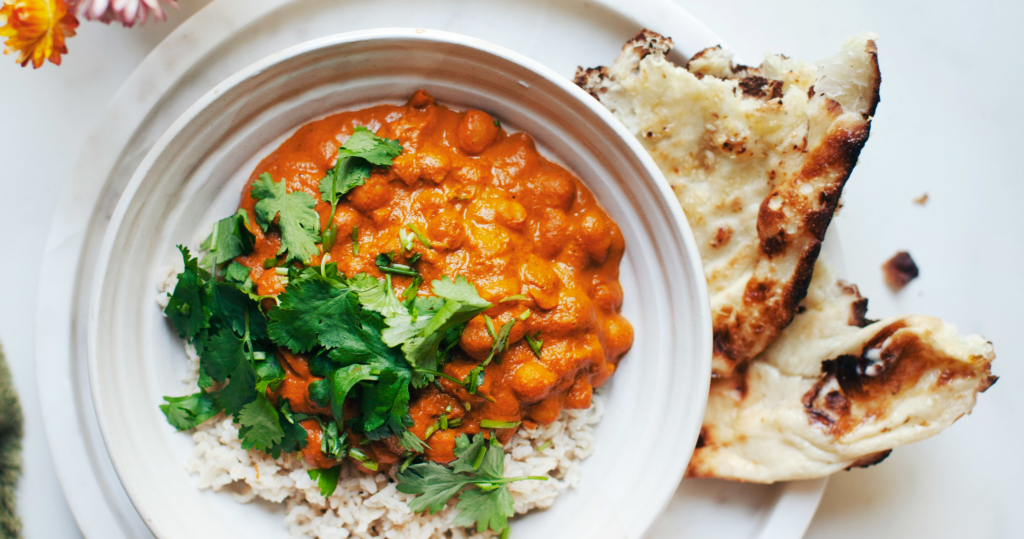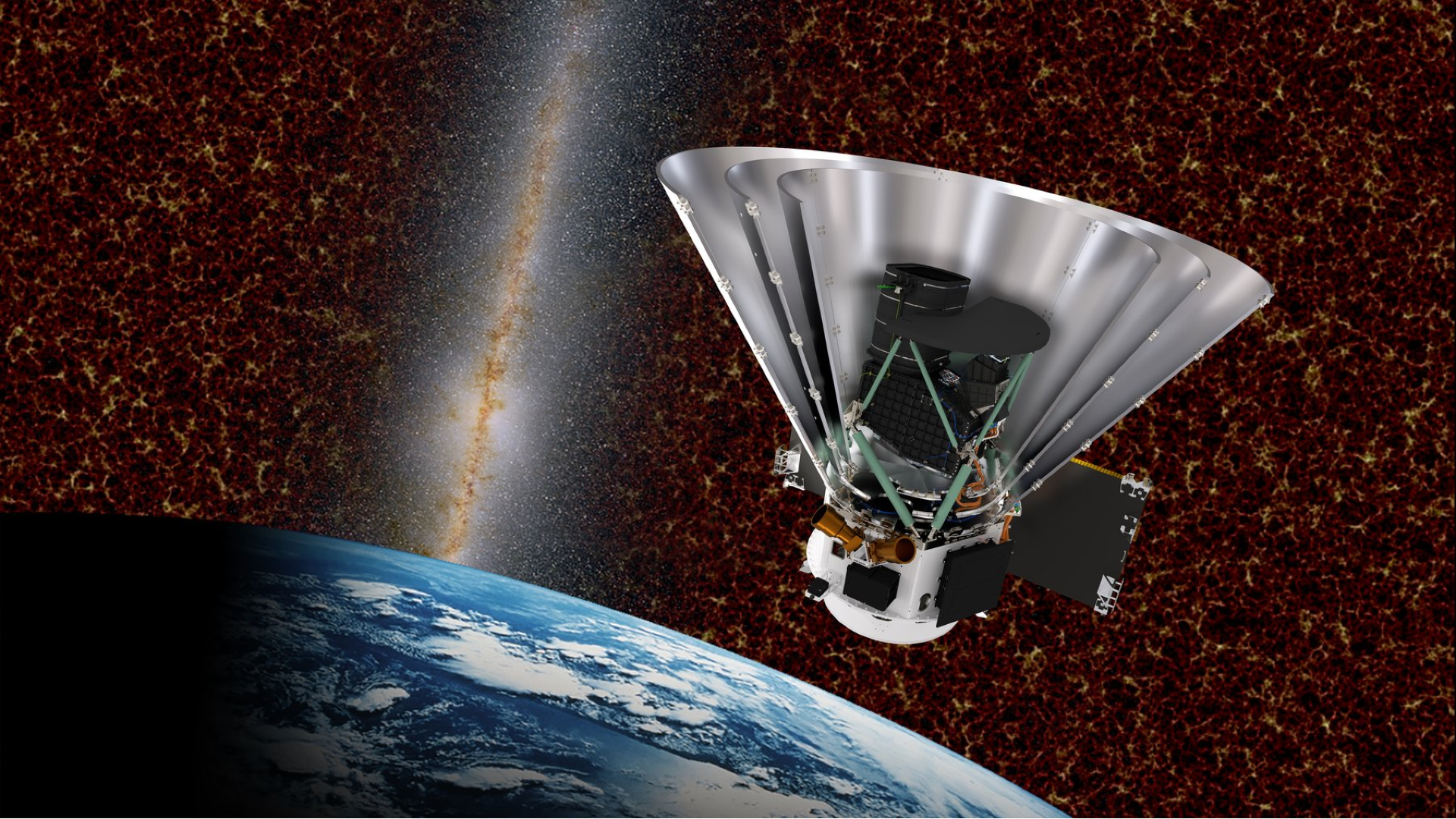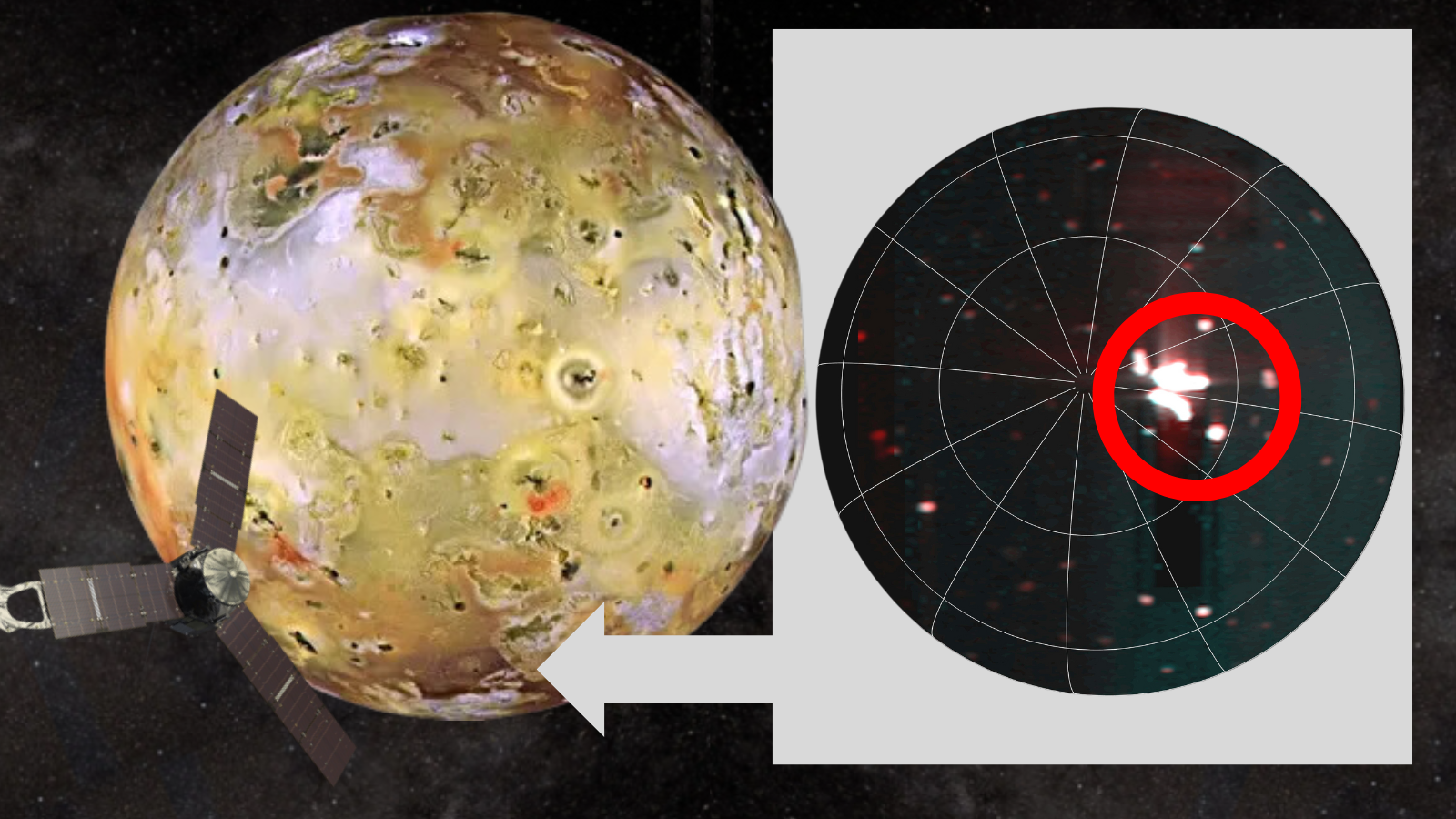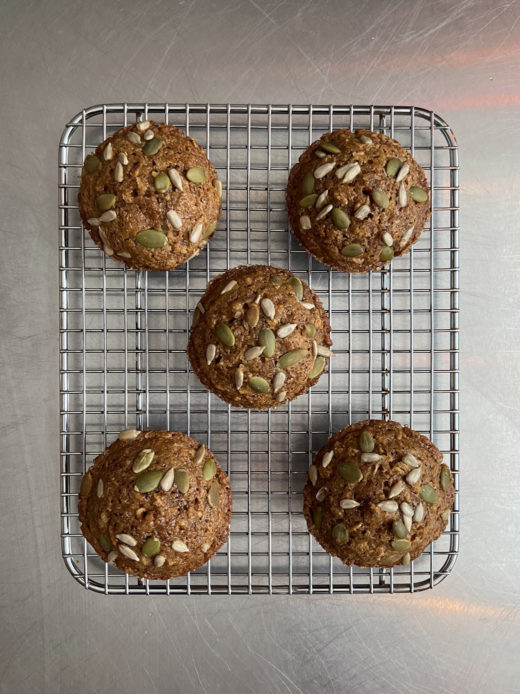North Indian-Inspired Butter Chickpeas
Most lovers of North Indian cuisine widely available in North America are familiar with Butter Chicken – the iconic dish that has captured the hearts and bellies of people the world over. In fact butter chicken is likely the most popular and recognizable Indian dish in our neck of the woods, and without a… The post North Indian-Inspired Butter Chickpeas appeared first on My New Roots.

Most lovers of North Indian cuisine widely available in North America are familiar with Butter Chicken – the iconic dish that has captured the hearts and bellies of people the world over. In fact butter chicken is likely the most popular and recognizable Indian dish in our neck of the woods, and without a doubt my own personal gateway to the unique flavours of Indian cuisine. This dish was the inspiration for these North Indian-Inspired Butter Chickpeas!
When I was 13 or 14, my best friend’s mother, Annie (who I’ve mentioned before in my sushi post – a woman who truly opened my eyes to the world of food beyond hot dogs and hamburgers!), took the three of us to The Host, a famous, Toronto institution that has been running successfully for 24 years. I can still remember the feeling of walking into the space, the air absolutely swollen with mouthwatering scents I had never experienced before. We sat down at the table, covered in a crisp white tablecloth, and a basket of seed-flecked, paper-thin crackers was dropped off along with the menus. “Papadam” Annie said. I took one bite and the entire thing shattered into my hands, which made us all laugh, and the taste was delicious, even if completely unfamiliar. I had just tried my first cumin seed!
This primed my palette for what was to come, and Annie confidently ordered for the table. There were things I recognized, like rice, and flatbread (naan), but most of the dishes were alluringly mysterious, arriving in copper bowls, with colourful sauces and chutneys. Once she explained to put some rice on my plate as a bed for the curries, she handed me a bowl whose scent made my mouth water instantly. “Butter chicken” she told me. Well, I knew both of those ingredients very well, but not looking like this! “Is it spicy?” I asked. “Not spicy hot”, she replied. “There are plenty of spices in there, but I’d describe it flavourful”. I had trusted this woman to guide me through Japanese, Korean, Ethiopian, Greek, Macedonian, and Moroccan restaurant experiences so far, so I took a heaping spoonful of the butter chicken and spread it over the rice.
It was love at first bite. The combinations of flavours, commingling in a sauce that was beguilingly rich and creamy, with huge chunks of perfectly tender chicken throughout was absolutely divine. It was tomato-y, but not overpoweringly so, and deeply aromatic with spices that I had certainly never tasted before. I savoured every bite of that butter chicken, along with chana masala, palak paneer, aloo gobi, and dal makhni. We ate naan, and samosa, and pakora and bhaji. It was a veritable feast that began my love affair with Indian food. Little did I know every corner of the continent, every family, every household brings a diversity and a uniqueness to what we generally label Indian food — there’s so much to explore! 


Butter chicken was invented in the 1950s, by a man named Kundan Lal Gurjal, who operated a restaurant called Moti Mahal in Delhi, the capital territory of India. Kundan had settled here in this Northern region of the country and started his business after escaping from political upheaval in another region of India. Moti Mahal was a success, and it served several delicious tandoori dishes, that came from their tandoor oven – a circular clay oven central to Punjabi cuisine.
As the story goes, Kundan didn’t want his leftover tandoori chicken to go to waste, but he also didn’t want it to dry out, so he mixed leftover marinade juices with tomato and butter, added the chicken to it, and let it all stew – butter chicken was born! Although necessity was the mother of this invention, he likely had no idea that he had created an internationally-loved delicacy that would stand the test of time. 


I started eating a vegetarian diet when I was 16, and butter chicken was one of the foods I missed the most. I’ve cooked a lot of Indian-inspired food at home over the years, but I’d never taken a crack at a plant-based butter chicken until my mom served me a version with chickpeas…brilliant! It was a serious why-didn’t-I-think-of-that moment.
One of the things that makes butter chicken so good, is that the chicken is marinated in yogurt and spices before cooking. This step accomplishes two things: one, it tenderizes the meat, and second, it seasons it. Because I was aiming for a weeknight dinner, I decided to skip this step with the chickpeas and just make sure that they were properly cooked and well seasoned before adding to the sauce. I also smashed about half of the legumes. This helped to increase their surface area, break up their tough skins, and allow the flavourful sauce to penetrate to the inner, absorbent centers. I also appreciated having the texture variation in the dish, making it more similar to the OG version.
Chickpea Party Tricks
We all know that chickpeas are fiber all-stars, providing 50% of your RDI in just one cup, (whoa!) but they have another party trick up their sleeve that I bet you didn’t know about. Two-thirds of the fiber in chickpeas is insoluble, meaning that it doesn’t break down during digestion, but instead moves through our digestive tract unchanged until it hits the large intestine. The fun starts here, where friendly bacteria (think probiotics!) go to town on said insoluble fiber and actually break it down to create short-chain fatty acids, including acetic acid, propionic acid, and butyric acid. These short-chain fatty acids can then be absorbed by the cells that line the wall of our large intestine and used for energy! How rad is that?! Butyric acid is in fact the preferred source of energy for the cells lining our colon, and with this bonus fuel comes greater potential for optimally active and healthy cells. This translates into a reduced risk of colon problems including colon cancer. So friends, invite chickpeas to your next dinner party – they’ll feed you and your colon cells. Can your pot roast do that?


Now let’s get cooking! For this dish I highly recommend cooking your own chickpeas from dried (I mean, have I ever NOT recommended that?! haha). For one, if you make the entire batch, you’re looking at around 4 cans of chickpeas, which is a lot of waste produced. Second, if you cook the legumes yourself, you can control the amount of salt that you use, as high sodium levels are a concern for some people. Third, they taste way better. Trust me. And fourth, it costs a lot less – I likely don’t have to elaborate on that for you  Read More
Read More













![From Gas Station to Google with Self-Taught Cloud Engineer Rishab Kumar [Podcast #158]](https://cdn.hashnode.com/res/hashnode/image/upload/v1738339892695/6b303b0a-c99c-4074-b4bd-104f98252c0c.png?#)

































































